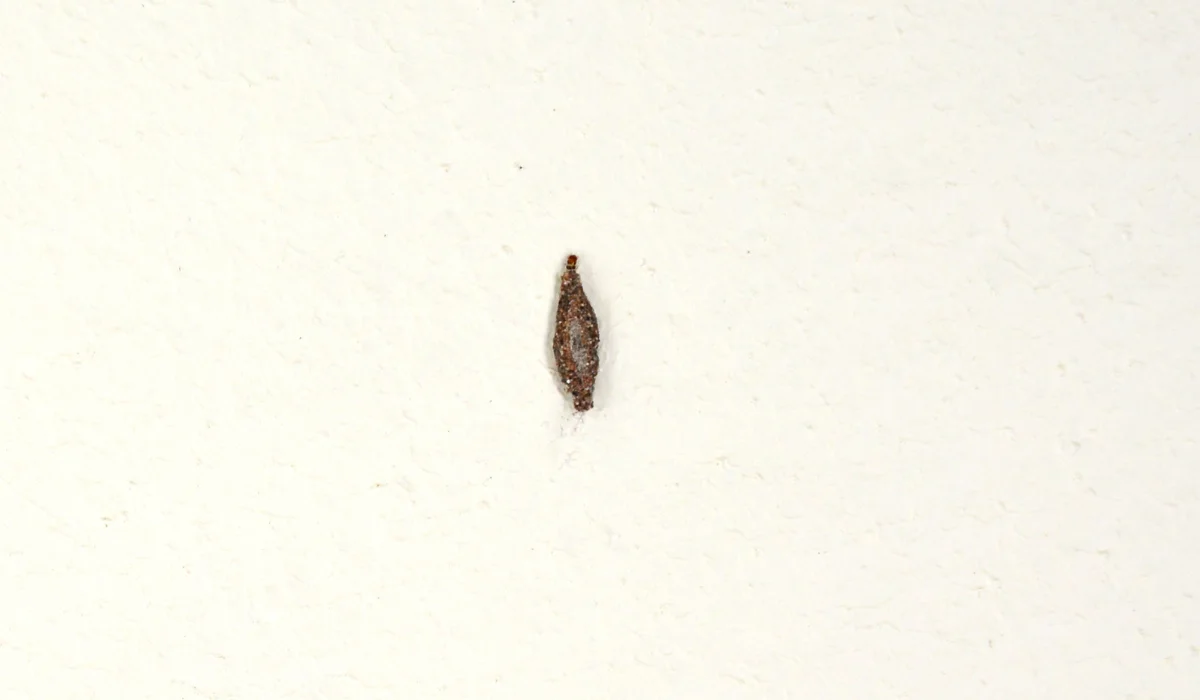Everything to Know About the Plaster Bagworm in Florida
Noticed tiny caterpillar-like pests hanging around your walls or ceiling? These could be plaster bagworms, which are common in Florida homes.
Plaster bagworms are known for feeding on spider webs and indoor debris, potentially damaging household items. Keep reading to shed light on why they shouldn't be ignored.
Key Takeaways
- Plaster bagworms are small bugs often found in Florida homes, with cases made from silk and debris.
- They live in dark, humid places like closets and garages and feed on spider webs, lint, and dust.
- These pests don’t cause serious health problems but may show that a home needs more cleaning.
- Regular cleaning and lowering humidity can help, but a pest control service might be needed if there are too many.
What Are Plaster Bagworms?
Plaster bagworms are bugs often found in Florida homes. Known for their distinctive cases, their life cycle goes through different stages, each with specific needs and characteristics.
These creatures usually make their homes in hidden places and do not directly pose significant health risks.
Physical Characteristics

Plaster bagworms, or household casebearers, have a unique appearance. Their oval cases resemble small, grayish pumpkin seeds about 0.40-0.60 inches (10-15 mm) long.
These cases are made from a mix of silk and materials like sand, dust, and lint, helping the larvae to blend into their surroundings.
Life Cycle
The life cycle of plaster bagworms involves several stages:
Stages | Description |
Egg | The life cycle starts with eggs. |
Larval Stage | Larvae create protective cases, feeding on mold, dead insects, and spider webs while moving in search of food. |
Pupal Stage | After enough nourishment, larvae molt in their cases and transform into adult moths. |
Adult Stage | Adult bagworm moths emerge with delicate hind wings; the full cycle takes several months. |
Common Habitat
Plaster bagworms thrive in regions with warm and humid climates, which is why they are prevalent in Florida. They love dark, undisturbed areas and are often spotted in closets, garages, and basements.
In homes with high humidity, they can be found on walls with stucco or near air conditioners. Because they feed on various organic materials, they might also be spotted where old spider webs and insect remnants accumulate.
Health Risks
Plaster bagworms do not present any significant health risks to humans. Unlike bed bugs or cockroaches, they do not spread diseases or cause allergies.
However, their cases and webs can accumulate dust, which might irritate individuals with respiratory issues. Unlike wasps or other aggressive pests, they do not bite or sting.
Why Do You Have Plaster Bagworms in Your House?
Plaster bagworms in your home can be puzzling. If you notice increasing plaster bagworms, their presence could suggest an underlying clean-up requirement. Here are some of their common attractors:
- Cobwebs: Plaster bagworms feed on spider webs, providing them with a food source of organic material.
- Lint and Hair: Lint and human or pet hair contain keratin and other organic fibers, which plaster bagworms can digest.
- Dust: Dust often contains organic particles such as dead skin cells, tiny fabric fibers, and microscopic debris, which they feed on.
How to Identify a Plaster Bagworm Infestation in Your Home
Plaster bagworms are tiny pests that can be mistaken for other household nuisances. Their presence often indicates a larger problem.
Whether mild or severe infestations, watch out for these specific signs :
Signs | How to Spot Each Sign |
Silk Webbing | Look in corners and near the ceiling for spider web-like silk. |
Hardened Cocoons | Small, grayish sacs are found on walls or ceilings. |
Lint and Debris | Seeing excessive lint or dust may point to their nests. |
Clinging to Walls | Bagworms hang on surfaces, looking like a bit of dirt. |
Moveable Sacs | Small, cocoon-like sacs clinging to surfaces like clothing. |
How to Get Rid of Plaster Bagworms in Florida
Florida homeowners often face challenges with plaster bagworms, a common household pest. To tackle this problem effectively, consider the following steps:
- Vacuum regularly to remove bagworms and protective cases they leave behind.
- Seal cracks and gaps to prevent adult females from laying eggs inside.
- Reduce humidity levels in the home, as they can thrive in moist environments.
Sometimes, standard home remedies or natural pest control may not suffice for larger infestations. When this happens:
- Contact a professional pest control service. They offer specialized solutions that target plaster bagworms and similar pests.
- Ask about additional services they might offer, like termite or mosquito control, to tackle many pests in one go.
Is It Time to Call Pest Control for Plaster Bagworms
While they aren't harmful to people, seeing plaster bagworms can be unsettling. For those who experience repeated bagworm sightings or damage to home interiors, it could signal a need for professional intervention. Professional pest control companies (like us at Native Pest Management) can assess the situation accurately and offer targeted treatments.
